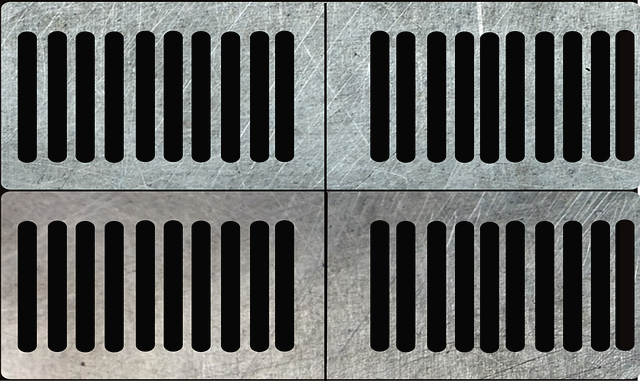Sewer line damage often goes unnoticed until severe issues like flooding, backups, or contaminated water supplies occur. Early signs include bad odors, persistent clogs, lush grass in odd places, floor cracks, and sinkholes. Recognizing these signs is crucial for prompt action. Repair options range from relining for small cracks to replacement for extensive damage; consult professionals who can assess the situation accurately. Identifying and addressing sewer line damage early prevents costly repairs, as outlined in a Sewer Line Repair Guide.
“Uncovering hidden threats beneath your feet, this article explores the enigmatic world of sewer line damage and offers a comprehensive Sewer Line Repair Guide. Learn to recognize subtle signs, from unusual odors to persistent clogs, indicating an ailing sewer system. We’ll navigate the extent of the problem and present diverse repair options tailored to specific issues. Additionally, discover a step-by-step approach to proactive maintenance, empowering you to safeguard your plumbing infrastructure.”
- Recognizing Sewer Line Damage: Signs to Watch Out For
- Assessing the Extent of the Problem and Repair Options
- A Step-by-Step Guide to Sewer Line Repair and Maintenance
Recognizing Sewer Line Damage: Signs to Watch Out For

Recognizing Sewer Line Damage: Signs to Watch Out For
One of the most insidious issues a homeowner can face is sewer line damage, often hidden beneath the surface. This silent problem can lead to severe flooding, backups, and even contaminated water supplies if left unchecked. The first step in addressing these issues is to be able to identify them early on. Look out for unusual odors, especially those reminiscent of sulfur, which could indicate a leaking sewer line. Another sign is persistent clogs in your drains, no matter how many times you clear them. These are often the first alerts that something is amiss with your underground plumbing.
Additionally, keep an eye out for patches of lush, green grass growing in your yard, especially in areas away from trees or other water sources. This could be a sign of a leak as water seeps into the soil. Cracks or sinks in your driveway or basement floor can also point to a damaged sewer line, as water and soil pressure may have caused these structural issues. If you notice any of these signs, it’s time to call in a professional sewer line repair guide to assess and fix the problem before it escalates further.
Assessing the Extent of the Problem and Repair Options

When it comes to assessing the extent of sewer line damage, the first step is identifying potential red flags. Look for signs like clogs that persist despite clearing attempts, unusual odours, or noticeable backups in sinks and toilets. These could indicate a breach in the pipeline, which may require urgent attention. It’s important to act swiftly as minor issues can escalate into major problems over time.
In terms of repair options, there are several approaches depending on the severity of the damage. A sewer line repair guide would typically recommend relining as a cost-effective and less invasive method for repairing small to medium-sized cracks or holes. For more extensive damage, replacement might be necessary. Homeowners should consult with professionals who can assess the situation accurately and suggest the best course of action based on their findings.
A Step-by-Step Guide to Sewer Line Repair and Maintenance

Identifying and addressing sewer line damage early is key to preventing costly repairs. Here’s a step-by-step guide to help you navigate the process of sewer line repair and maintenance:
1. Observe Visible Signs: Start by inspecting your property for any noticeable signs of sewer line issues, such as yard drainage problems, mold or mildew near pipes, or unusual smells. These could indicate leaks or blockages.
2. Call a Professional: If you suspect damage, reach out to experienced plumbers who can assess the situation accurately. They have the tools and expertise to detect even subtle problems through techniques like sewer camera inspection, which involves inserting a small camera into the line to visualize any damage or clogs.
3. Assess Damage Extent: Once the issue is identified, determine the extent of the damage. Common problems include cracks, breaks, roots intruding, or corroded pipes. Each issue requires specific repair methods, so understanding the root cause is crucial.
4. Repair or Replace: Depending on the severity, repairs might involve relining the pipe, repairing joints, or replacing sections. In cases of extensive damage or old lines, a complete replacement may be necessary to ensure long-term stability and prevent future issues.
Identifying and addressing sewer line damage early is key to preventing costly repairs and maintaining a healthy plumbing system. By being vigilant about potential signs, such as clogs, odd smells, or visible cracks, you can effectively assess the situation using our comprehensive guide. Once detected, the next step is to consult professionals who can offer various repair options tailored to the extent of the damage. Regular maintenance, including regular inspection and cleaning, will further safeguard your sewer lines from future issues. With the right knowledge and proactive measures, you’ll be well-equipped to handle any challenges that arise, ensuring a reliable and efficient sewer line repair process.
